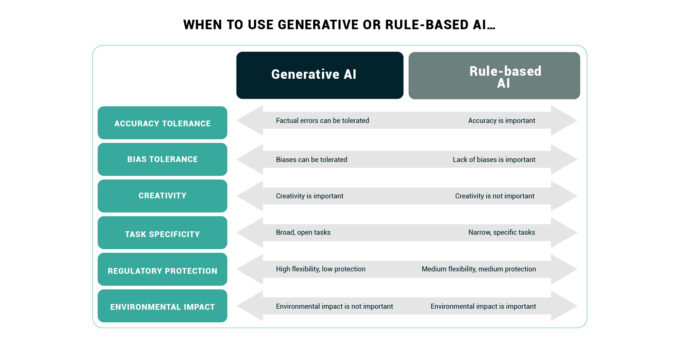When to use GenAI
GenAI is particularly effective for tasks that are creative and exploratory. Its ability to generate diverse and unique outputs makes it ideal for brainstorming sessions to come up with “new” ideas.
It can help marketing teams develop campaigns by generating catchy slogans or designing visually appealing graphics. Similarly, in content creation, GenAI can assist writers by producing article drafts, summarizing long documents, or creating engaging social media posts.
For example, the ecommerce platform Shopify has introduced Shopify Magic, an AI tool that generates compelling product descriptions in seconds, saving merchants time.
In customer service, the technology can handle general, open-ended queries to customer inquiries, draft polite and professional emails, and even engage in natural-sounding conversations. This makes it a valuable tool for businesses looking to enhance their customer support without significantly increasing operational costs.
Klarna’s AI assistant dealt with two-thirds of customer-service chats in its first month, doing work equivalent to 700 humans at the Swedish fintech company. The AI reduced repeat inquiries by 25% and cut resolution times from 11 to under two minutes. Available in 23 markets and 35 languages, it’s expected to boost Klarna’s profits by $40m this year.
GenAI also has applications in programming. It can assist developers by generating code snippets, suggesting improvements, and even debugging existing code. This capability helps streamline the development process, allowing programmers to focus on the more complex and strategic parts of their projects.
Moreover, GenAI serves as an excellent tool for learning and development. Language learners, for instance, can benefit from conversational practice, where the AI provides immediate feedback and suggestions. This can help improve fluency quickly.







